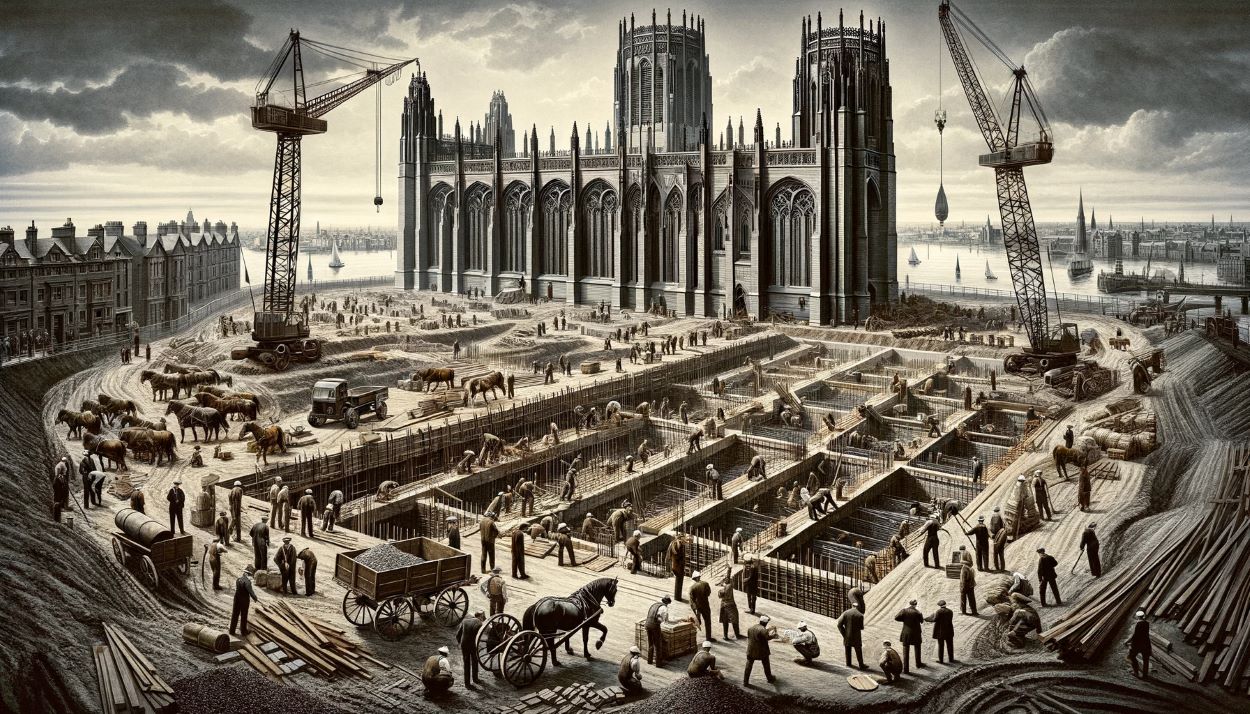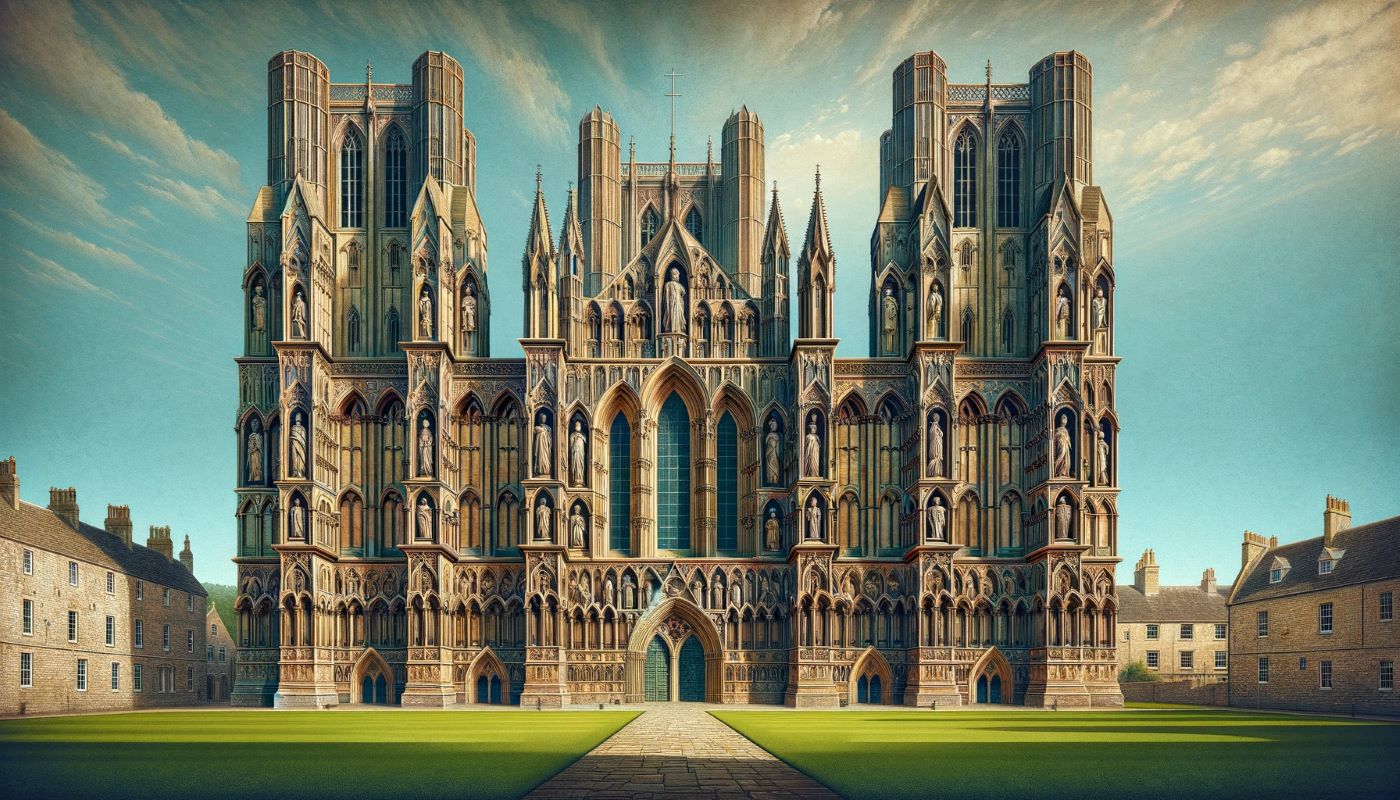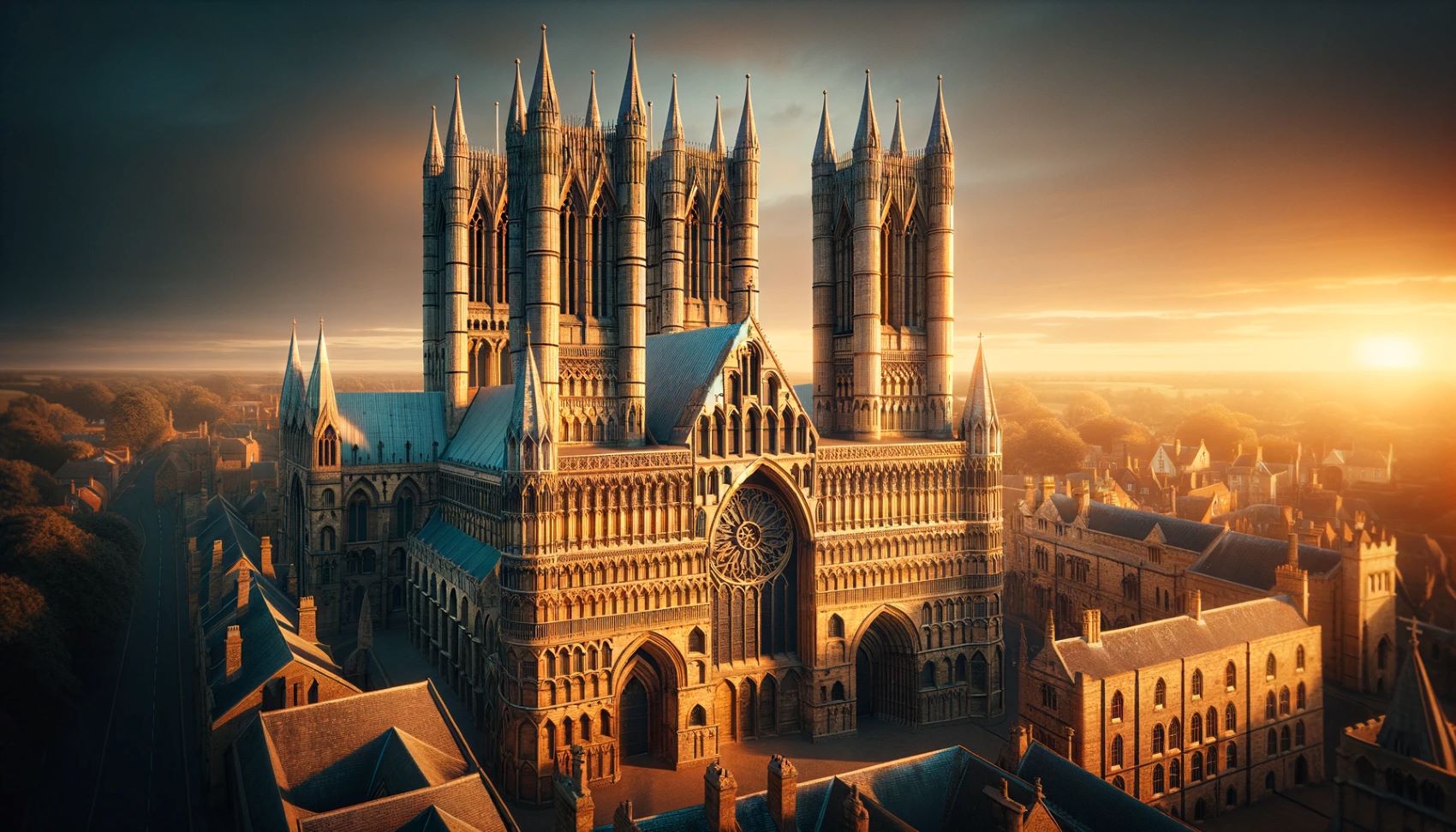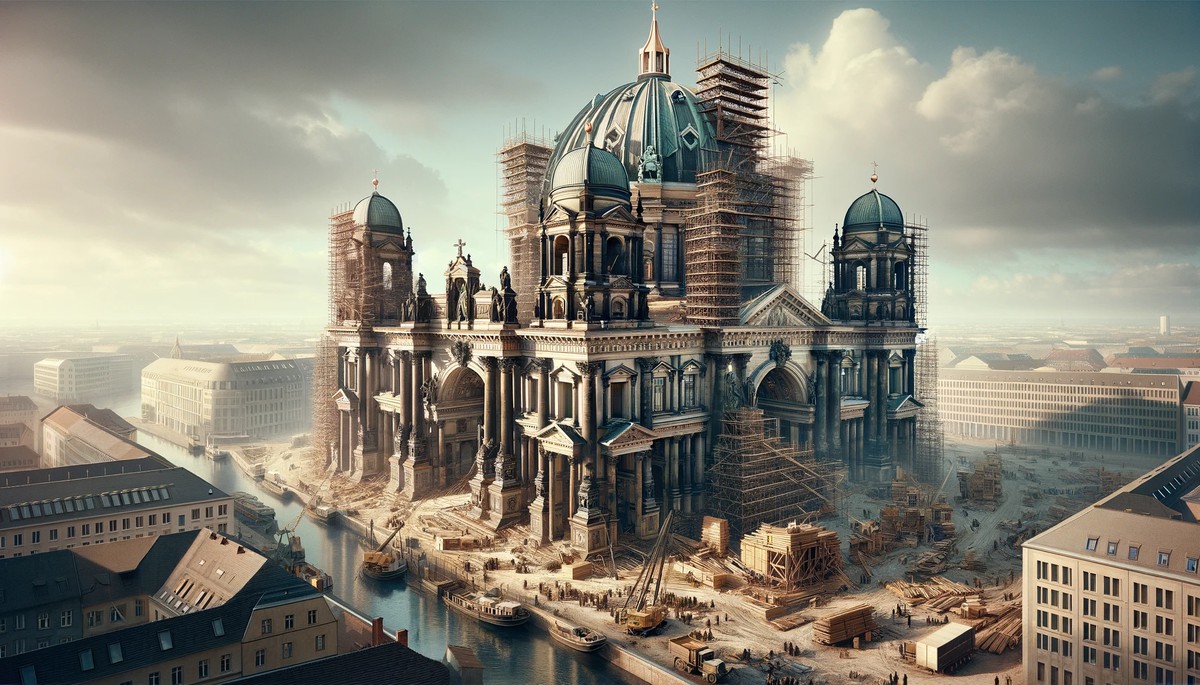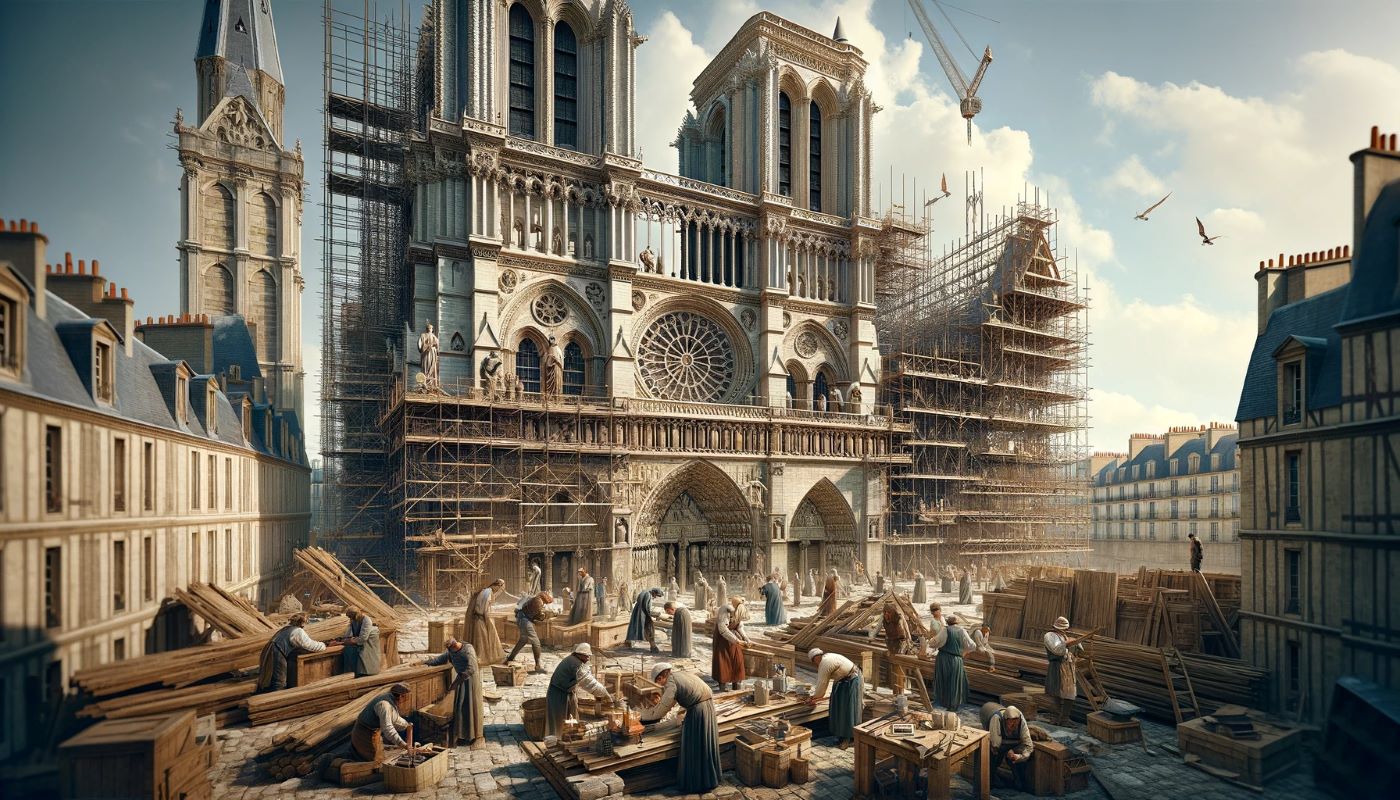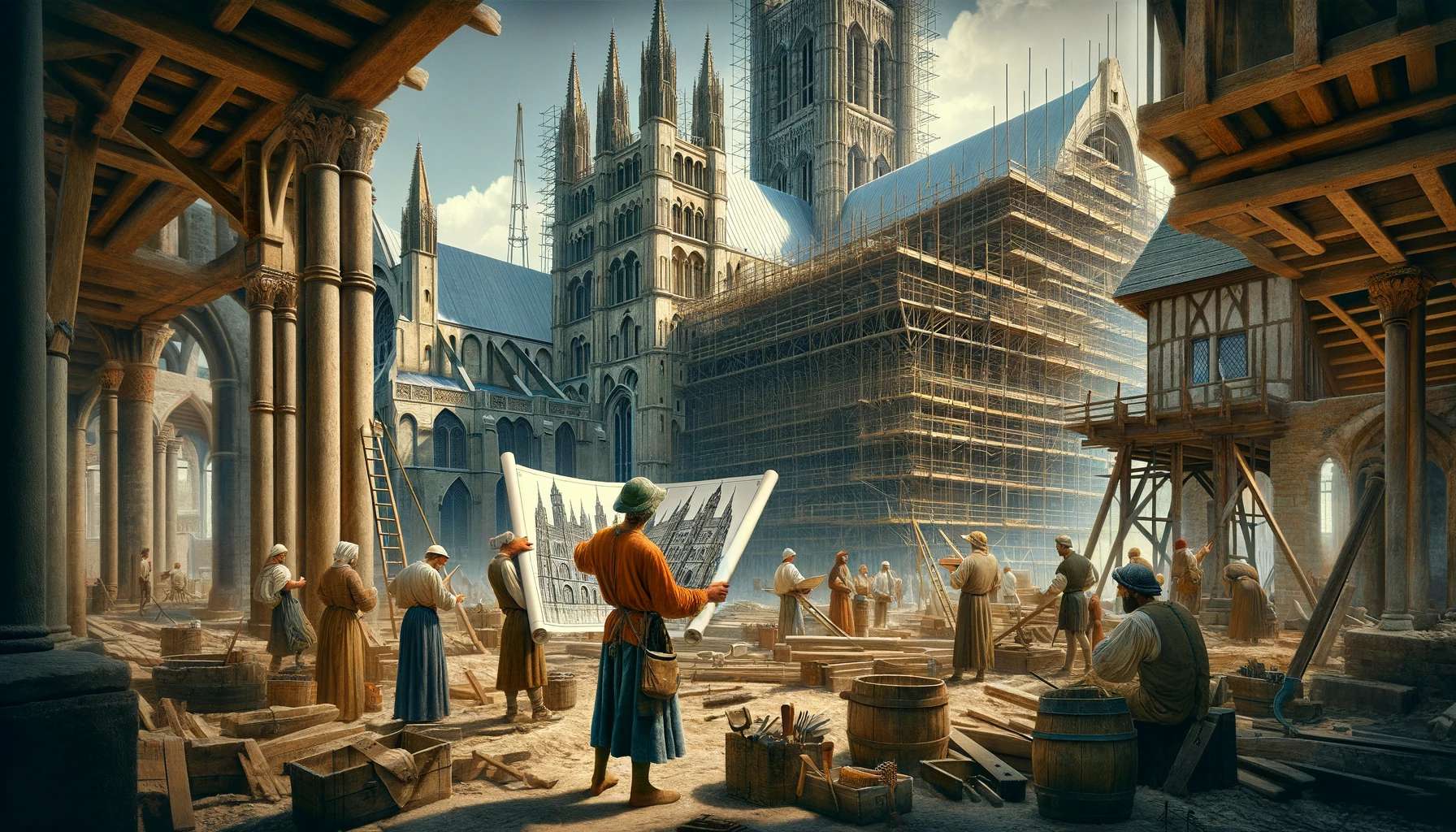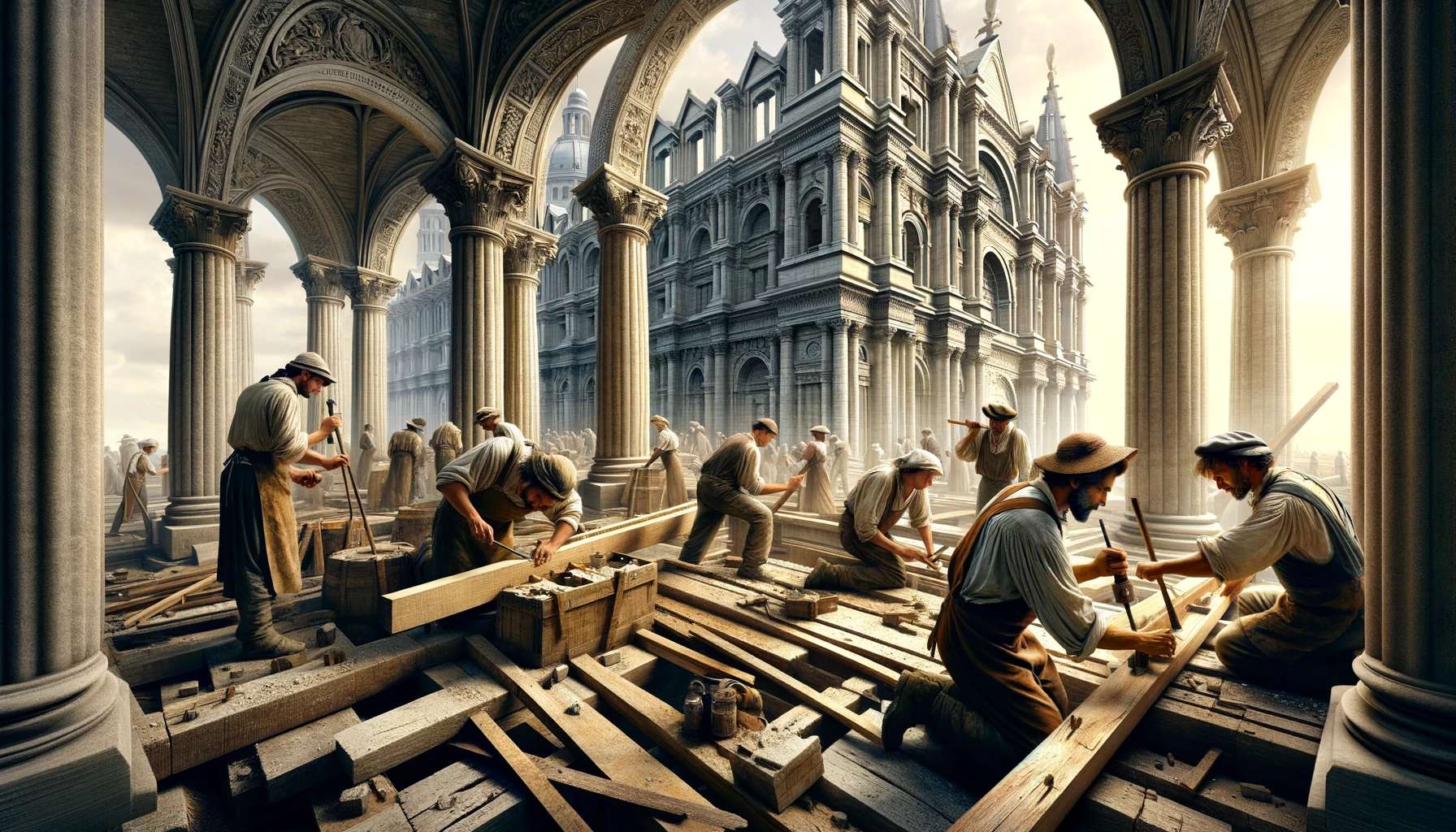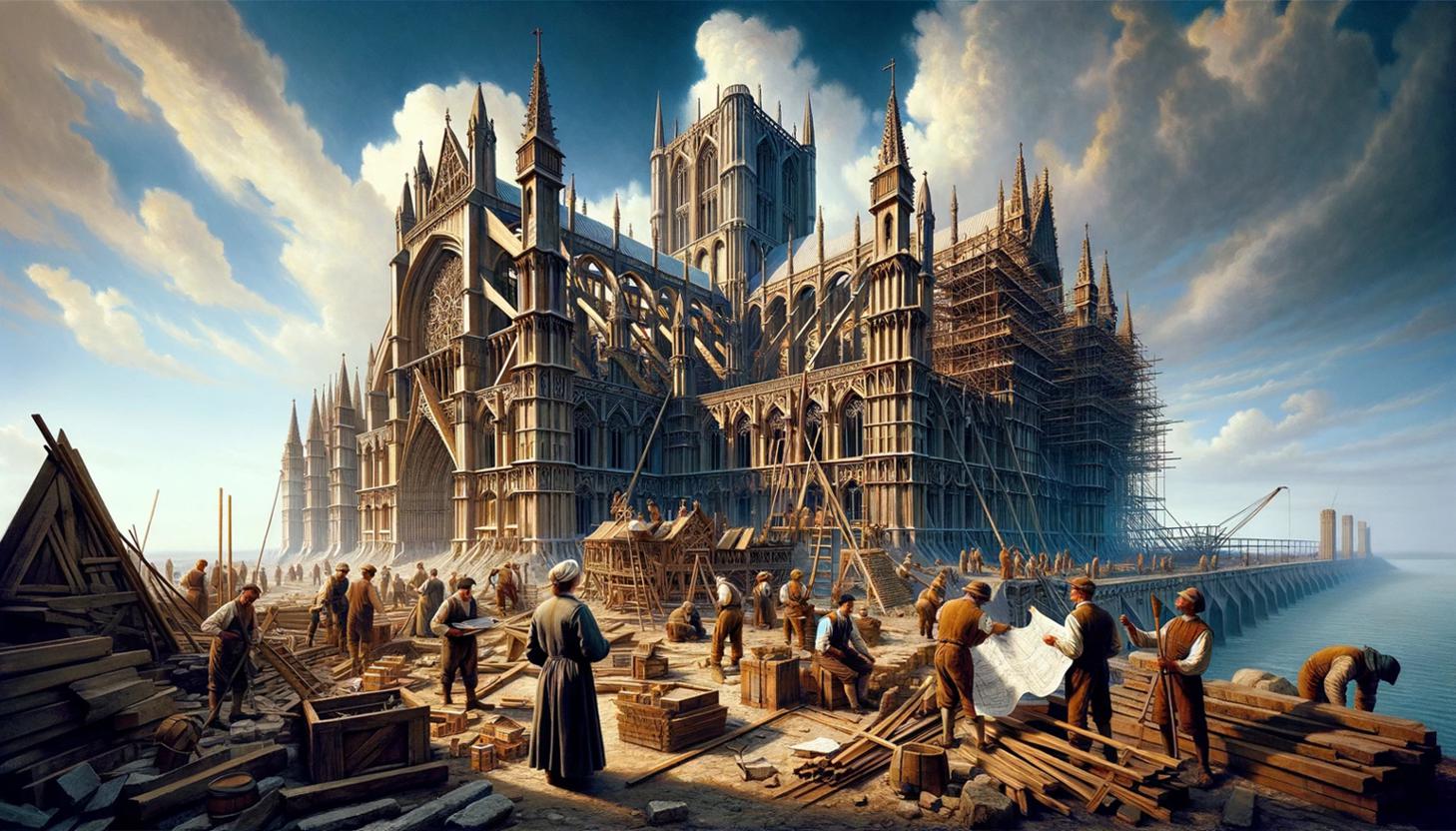Home>Arts and Culture>When Was Speyer Cathedral Built
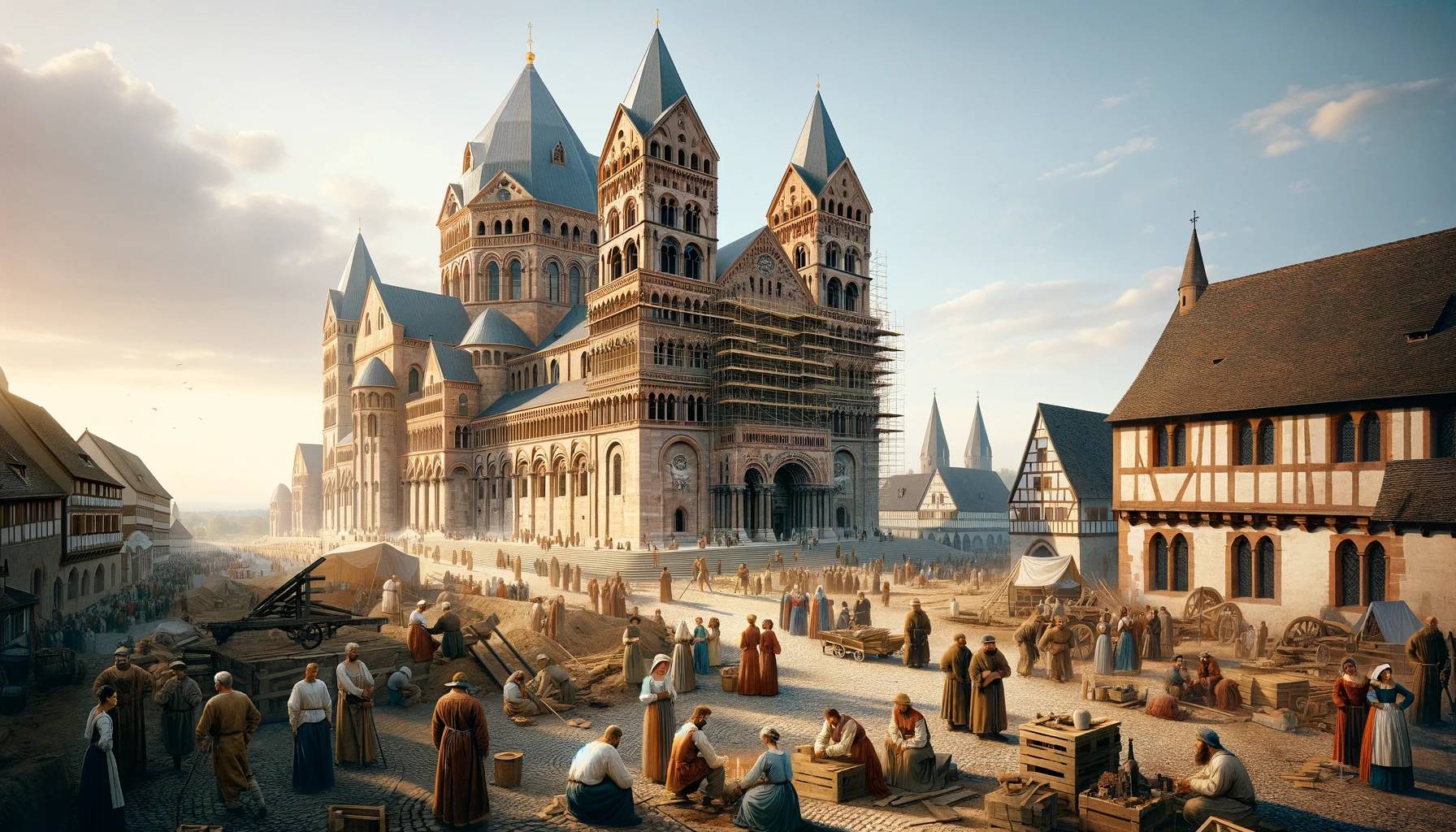

Arts and Culture
When Was Speyer Cathedral Built
Published: February 16, 2024
Peter Smith, Editorial Director at Christian.net, combines deep insights into faith, politics, and culture to lead content creation that resonates widely. Awarded for his contributions to religious discourse, he previously headed a major organization for religious communicators, enhancing dialogue on faith's societal impacts.
Discover the history of Speyer Cathedral, a masterpiece of arts and culture, and learn about its construction and significance. Explore the architectural marvel built in the 11th century.
(Many of the links in this article redirect to a specific reviewed product. Your purchase of these products through affiliate links helps to generate commission for Christian.net, at no extra cost. Learn more)
Table of Contents
Introduction
Speyer Cathedral, a magnificent example of Romanesque architecture, stands as a testament to the rich history and cultural heritage of Germany. This awe-inspiring structure, located in the picturesque town of Speyer, is not merely a building; it is a living chronicle of the region's past, a symbol of faith, and a masterpiece of architectural ingenuity.
The cathedral, officially known as the Imperial Cathedral Basilica of the Assumption and St. Stephen, holds a significant place in the annals of European history. Its imposing presence and timeless allure draw visitors from around the world, beckoning them to immerse themselves in the grandeur of its design and the stories it silently whispers.
As we embark on a journey to unravel the mysteries and marvels of Speyer Cathedral, we will delve into its captivating history, explore the intricacies of its construction, and marvel at its architectural features. Moreover, we will uncover the profound significance it holds for the local community and the enduring legacy it has left on the world stage.
Join me as we step back in time to witness the birth of this architectural wonder and uncover the secrets that have made Speyer Cathedral an enduring symbol of human creativity and spiritual devotion.
Read more: When Was Hereford Cathedral Built
History of Speyer Cathedral
The history of Speyer Cathedral is a captivating tale that spans over a millennium, weaving together the threads of religious devotion, political power, and architectural prowess. The origins of this monumental edifice can be traced back to the early 11th century when Conrad II, the Holy Roman Emperor, envisioned a grand cathedral that would not only serve as a place of worship but also stand as a symbol of imperial authority.
Construction of the cathedral commenced in 1030, under the patronage of Conrad II, marking the beginning of a legacy that would endure for centuries. The cathedral was intended to be a grand statement of imperial power, reflecting the aspirations and ambitions of the ruling elite. Its strategic location in the heart of the empire further emphasized its significance as a symbol of unity and strength.
Over the years, Speyer Cathedral bore witness to the ebb and flow of history, surviving wars, invasions, and the passage of time. Its enduring presence served as a silent sentinel, bearing testimony to the triumphs and tribulations of the region. The cathedral's rich history is intertwined with the narratives of emperors, bishops, and the faithful, each leaving their indelible mark on its hallowed grounds.
The cathedral's significance transcended its role as a place of worship; it became a coronation site for German kings and emperors, adding another layer of historical importance to its legacy. The solemn ceremonies held within its sacred walls echoed with the weight of tradition and the aspirations of a burgeoning empire.
Despite the ravages of history, including extensive damage during the French Revolution and World War II, Speyer Cathedral emerged resilient, rising from the ashes time and again. Its restoration and preservation stand as a testament to the unwavering dedication of the local community and the enduring reverence for this architectural marvel.
Today, Speyer Cathedral stands as a living monument to the enduring spirit of human creativity and faith. Its history, etched in stone and steeped in tradition, continues to inspire awe and reverence, inviting visitors to embark on a journey through time and immerse themselves in the grandeur of its storied past.
Construction of Speyer Cathedral
The construction of Speyer Cathedral stands as a testament to the unwavering dedication and architectural prowess of the craftsmen and visionaries of the time. Commencing in 1030 under the patronage of Conrad II, the Holy Roman Emperor, the cathedral was conceived as a grand statement of imperial power and religious devotion. The ambitious undertaking aimed to create a structure that would not only inspire awe but also endure for centuries, reflecting the might and majesty of the empire.
The cathedral's construction was a monumental feat, employing the finest artisans and craftsmen of the era. The use of Romanesque architecture, characterized by its robust forms and imposing presence, imbued the cathedral with a timeless allure. The builders meticulously laid each stone, sculpting the edifice with precision and care, ensuring that every arch, column, and spire contributed to the cathedral's grandeur.
The scale of the construction was awe-inspiring, with the cathedral's dimensions reflecting the lofty ambitions of its creators. The soaring vaults and intricate detailing spoke of a dedication to perfection, as each element was carefully crafted to harmonize with the whole. The construction process itself became a testament to the ingenuity and skill of the artisans, who transformed raw materials into a symphony of stone and mortar.
The cathedral's construction also served as a unifying force, drawing together craftsmen, laborers, and scholars from across the empire. Their collaborative efforts, fueled by a shared vision of creating a masterpiece, resulted in a structure that transcended the sum of its parts. The cathedral became a living testament to the collective aspirations of a society driven by faith, ambition, and a quest for enduring legacy.
As the construction neared its completion, the cathedral rose majestically, casting its shadow over the town of Speyer and the surrounding landscape. Its imposing silhouette became a beacon of hope and inspiration, a tangible symbol of the empire's resilience and cultural richness. The completion of Speyer Cathedral marked not only the end of a monumental construction project but also the beginning of a legacy that would endure for centuries to come.
Today, the construction of Speyer Cathedral stands as a testament to the indomitable spirit of human creativity and the enduring legacy of architectural marvels. Its walls echo with the whispers of centuries past, inviting visitors to marvel at the dedication and ingenuity that brought this grand edifice to life.
Architectural Features
The architectural features of Speyer Cathedral stand as a testament to the ingenuity and artistic prowess of the craftsmen who brought this grand edifice to life. The cathedral, crafted in the Romanesque style, boasts a myriad of captivating elements that have captivated visitors for centuries.
1. Romanesque Design:
The cathedral's architectural style, characterized by its robust forms and symmetrical proportions, reflects the Romanesque aesthetic. The use of rounded arches, sturdy columns, and a sense of massiveness imbues the structure with a timeless grandeur, evoking a sense of strength and permanence.
Read more: When Was Exeter Cathedral Built
2. Imperial Dome:
The imposing dome of Speyer Cathedral rises majestically, commanding attention and inspiring awe. Its sheer size and elegant proportions make it a focal point of the structure, drawing the eye heavenward and evoking a sense of reverence and wonder.
3. Crypt of St. Stephen:
Beneath the cathedral lies the crypt of St. Stephen, a sacred space adorned with intricate carvings and ornate decorations. This subterranean sanctuary serves as a testament to the cathedral's spiritual significance and houses the remains of emperors and bishops, adding a layer of historical and religious importance to the architectural ensemble.
4. Sculptural Details:
The cathedral's façade is adorned with a wealth of sculptural details, depicting biblical scenes, saints, and symbolic motifs. Each intricately carved figure and relief tells a story, inviting visitors to unravel the rich tapestry of religious and cultural symbolism woven into the very fabric of the cathedral.
5. Towering Spires:
The cathedral's soaring spires reach towards the heavens, punctuating the skyline with their graceful silhouettes. These towering structures, adorned with delicate tracery and decorative elements, add verticality and elegance to the architectural composition, further enhancing the cathedral's visual impact.
Read more: When Was The Metropolitan Cathedral Built
6. Ornate Portals:
The entrances to Speyer Cathedral are adorned with ornate portals, featuring elaborate carvings and sculpted decorations. These portals serve as thresholds to the sacred space within, inviting visitors to cross the threshold into a realm of spiritual contemplation and architectural splendor.
7. Timeless Beauty:
The architectural features of Speyer Cathedral, collectively, exude a timeless beauty that transcends the boundaries of time and culture. The harmonious blend of structural elements, decorative motifs, and spiritual symbolism creates an immersive experience that resonates with visitors, inviting them to marvel at the enduring legacy of human creativity and devotion.
As visitors wander through the hallowed halls and sunlit courtyards of Speyer Cathedral, they are enveloped in a symphony of architectural marvels, each element weaving together to create an immersive tapestry of beauty and spiritual significance. The cathedral's architectural features, steeped in history and imbued with artistic brilliance, continue to inspire and captivate all who cross its threshold.
Significance and Legacy
The significance and legacy of Speyer Cathedral extend far beyond its architectural grandeur, encompassing profound historical, cultural, and spiritual dimensions that have left an indelible mark on the fabric of European heritage. As a symbol of imperial power and religious devotion, the cathedral has played a pivotal role in shaping the identity of the region and continues to inspire awe and reverence in the hearts of visitors.
Historical Significance:
Speyer Cathedral stands as a living chronicle of European history, bearing witness to the rise and fall of empires, the tumult of wars, and the enduring resilience of the human spirit. Its status as a coronation site for German kings and emperors imbues it with a profound historical significance, linking it to the annals of royal succession and the consolidation of political power. The cathedral's walls echo with the whispers of centuries past, each stone a testament to the enduring legacy of the empire and the aspirations of its rulers.
Read more: When Was Cologne Cathedral Built
Cultural Heritage:
As a masterpiece of Romanesque architecture, Speyer Cathedral represents a pinnacle of human creativity and ingenuity. Its architectural features, sculptural details, and imposing presence serve as a testament to the artistic achievements of the medieval era. The cathedral's role as a center of religious and cultural life has enriched the local community and drawn pilgrims and scholars from far and wide, fostering a legacy of cultural exchange and spiritual contemplation.
Spiritual Embrace:
The cathedral's spiritual significance transcends its role as a place of worship; it serves as a sanctuary for the faithful and a testament to the enduring power of faith. The crypt of St. Stephen, with its sacred relics and hallowed tombs, evokes a sense of reverence and spiritual contemplation, inviting visitors to connect with the divine and reflect on the passage of time. The cathedral's sacred spaces have provided solace and inspiration to countless generations, fostering a legacy of spiritual enrichment and communal devotion.
Enduring Legacy:
Speyer Cathedral's enduring legacy is woven into the fabric of European heritage, resonating with visitors and scholars alike. Its architectural influence has reverberated across the centuries, inspiring subsequent generations of builders and artists. The cathedral's preservation and restoration efforts stand as a testament to the enduring reverence for its legacy, ensuring that future generations will continue to marvel at its timeless beauty and historical significance.
As visitors stand in the shadow of Speyer Cathedral, they are enveloped in the embrace of a living monument, a testament to the enduring legacy of human creativity, faith, and cultural richness. The cathedral's significance and legacy continue to transcend the boundaries of time, inviting all who cross its threshold to partake in a timeless journey through history and spirituality.
Conclusion
In conclusion, Speyer Cathedral stands as a timeless testament to the enduring spirit of human creativity, faith, and cultural heritage. From its humble beginnings in the early 11th century to its current status as a revered architectural marvel, the cathedral has woven a rich tapestry of history, artistry, and spiritual significance.
The cathedral's journey through time mirrors the ebbs and flows of European history, bearing witness to the rise and fall of empires, the ravages of war, and the enduring resilience of the human spirit. Its significance as a coronation site for German kings and emperors adds a layer of historical importance, linking it to the annals of royal succession and the consolidation of political power.
As a masterpiece of Romanesque architecture, Speyer Cathedral has left an indelible mark on the cultural landscape of Europe. Its imposing dome, intricate sculptural details, and soaring spires stand as a testament to the artistic achievements of the medieval era, inspiring awe and reverence in all who behold them. The cathedral's role as a center of religious and cultural life has enriched the local community and drawn pilgrims and scholars from far and wide, fostering a legacy of cultural exchange and spiritual contemplation.
Moreover, the spiritual embrace of Speyer Cathedral transcends its physical presence, offering solace, inspiration, and a profound connection to the divine. The crypt of St. Stephen, with its sacred relics and hallowed tombs, invites visitors to reflect on the passage of time and find moments of spiritual enrichment within its sacred spaces.
The enduring legacy of Speyer Cathedral is a testament to the resilience of human endeavor and the enduring power of architectural marvels to captivate and inspire across generations. Its preservation and restoration efforts underscore the unwavering reverence for its historical and cultural significance, ensuring that future generations will continue to marvel at its timeless beauty and find inspiration in its storied past.
As visitors stand in the shadow of Speyer Cathedral, they are enveloped in the embrace of a living monument, beckoning them to partake in a timeless journey through history and spirituality. The cathedral's significance and legacy continue to transcend the boundaries of time, inviting all who cross its threshold to immerse themselves in the grandeur of its storied past and find moments of reflection, inspiration, and awe.
